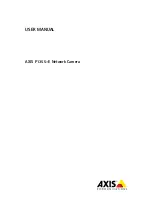
10
Energy Efficiency
The EX8200 line of switches delivers high-density, wire-rate platforms that consolidate
network devices, interconnections, and architectural layers in both data center and
campus environments.
In the data center, the EX8200 line of switches accommodates large numbers of 10 GbE
line-rate uplinks from access-layer devices such as the EX4200 line of switches, offering
a scalable solution for supporting more servers with fewer switches, effectively reducing
power consumption, heat generation, and footprint.
In campus aggregation and core environments, the line-rate 10 GbE densities and carrier-
class performance enable the EX8200 line of switches to support more users with less
network equipment. While EX4200 switches deployed in Virtual Chassis configurations
provide network access for floors or buildings with 10 GbE uplinks, the high-density
EX8200 line of switches can aggregate the wiring closet uplinks within a single platform,
providing an effective solution for reducing energy consumption by deploying less devices.
Investment Protection
While the EX8200 line of switches is ideal for today’s high-performance, high-density
networks, it also provides investment protection for the future. By providing excess
capacity now via the passive backplane design, the EX8200 line of switches will allow
users to easily migrate to higher-speed 100 Gigabit Ethernet connections when they
are ready—without requiring any upgrades to the switch fabric, Routing Engines, power
supplies or cooling system.
The Junos OS Advantage
By leveraging the same modular Junos OS as Juniper Networks router products, the EX
Series switches deliver a consistent implementation of each control plane feature across
the entire Juniper infrastructure. Running a common operating system across all products
dramatically reduces training as well as maintenance and management overhead, which
translates into lower TCO.
Junos OS makes this possible by adhering to a rigid and disciplined development process
called the “three ones:” one source code, one release train and one modular architecture.
A single source code ensures that Junos OS remains a single, cohesive operating system
throughout its development, regardless of the product platform on which it runs. One
release train means that each new release is a superset of the previous; new Junos OS
features are always implemented in the mainline, not in bug fixes to ensure stability and
feature availability from one release to the next.
One OS
One Release
One Architecture
Frequent Releases
Module
X
— API —
9.6
9.5
9.4
TX Matrix
J Series
Junos OS utilizes a single source code, adheres
to a consistent and predictable release train, and
employs a single modular architecture.






























